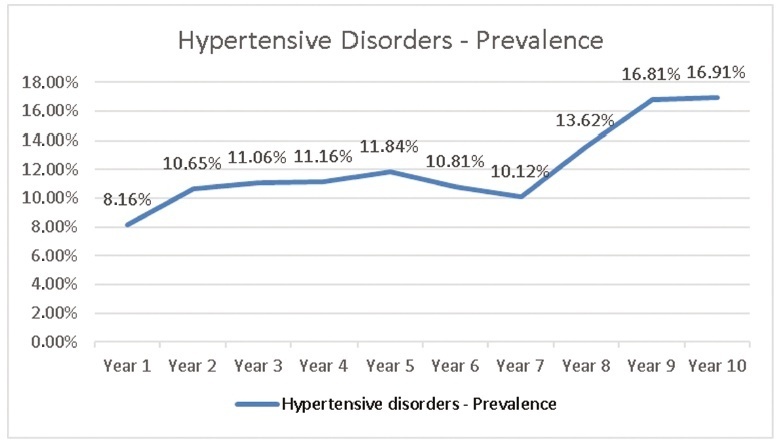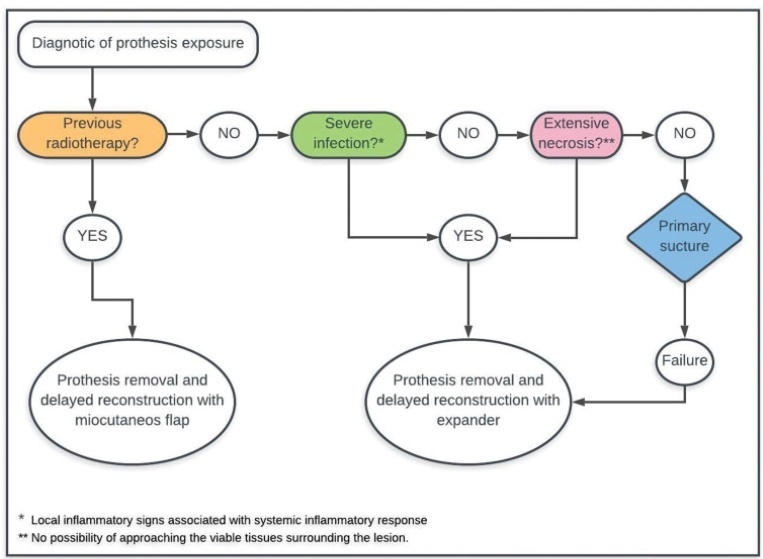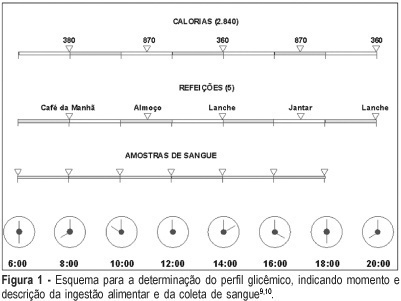Summary
Revista Brasileira de Ginecologia e Obstetrícia. 2002;24(1):69-69
DOI 10.1590/S0100-72032002000100013
Summary
Revista Brasileira de Ginecologia e Obstetrícia. 2001;23(2):69-73
DOI 10.1590/S0100-72032001000200002
Purpose: to analyze the follow-up of regretful sterilized women who sought sterilization reversal at a public service. Method: a retrospective study was carried out with a population of sterilized women who attended the infertility clinic during the period from June 1983 to July 1998. The analysis of the data was descriptive. Results: among the 147 women who sought the infertility clinic, most were 20 to 30 years old and 60% were sterilized at the age of 25 years. During follow-up, 54.4% of the initial patients gave up treatment, 15% were discouraged to continue the investigation and only 31 (21%) underwent tubal anastomosis. Fourteen women became pregnant and nine (6.1%) of them had term gestation. Conclusion: women who request sterilization should be counseled and instructed about the definitive feature of this method in order to reduce regret after sterilization.
Summary
Revista Brasileira de Ginecologia e Obstetrícia. 2005;27(2):69-74
DOI 10.1590/S0100-72032005000200005
PURPOSE: to determine the prevalence of overweight, obesity, and associated factors among women who visited a general gynecologic clinic in a secondary hospital of reference. METHODS: the following variables were studied: age, race, educational level, family income, job (paid work done by the women), type of the women's job, current partner, menstrual cycle characteristics at the time of interview, and body mass index (BMI). The patients were divided into three groups, according to their BMI values: <25 kg/m² (normal), between 25-29 kg/m² (overweight) and >30 kg/m² (obesity). The odds ratio (OR) and respective 95% confidence interval (95% CI) were calculated in the overweight and obese groups. Subsequently, the OR was calculated and adjusted for other variables. RESULTS: among the 676 studied women, 89.8% had received up to 8 years of formal education, 83.0% had a partner, 77.6% were Caucasian, 61.4% earned less than 5 minimum wages, and 36.0% of these women were menopausal. The prevalence of overweight was 35.6% and of obesity 24.6%. Overweight was related to age ranging from 50 to 59 years (OR: 3.22; 95% CI: 1.67-6.20) and menopause (OR: 1.52; 95% CI: 1.03-2.26), and obesity was related to menopause (OR: 2.57; 95% CI: 1.66-4.00) and to age range above 40 years (OR: 2.95; 95% CI: 1.37-6.37). According to the multiple regression analysis, only obesity was associated with age range above 40 years (OR: 2,51; 95% CI: 1.05-6.00). CONCLUSION: the prevalence rates of overweight and obesity were high in our sample of low-income women and those with less education. Obesity was associated with women aged over 40. Attempts should be made to reduce the prevalence of overweight and obesity in women.
Summary
Revista Brasileira de Ginecologia e Obstetrícia. 1999;21(2):69-76
DOI 10.1590/S0100-72031999000200003
Purpose: to evaluate core biopsy (CB) for the diagnosis of subclinical breast lesions, comparing with surgical biopsy previously identified by stereotaxic mammography. Methods: this is a cross-sectional study of 41 subclinical lesion cases over 35 years of age, between January 1995 and February 1997 at the Instituto de Ginecologia da Universidade Federal do Rio de Janeiro. The cases were classified mammographically as benign, probably benign, suspicious and malignant. Benign and probably benign lesions were studied together for statistical purposes. The histopathologic diagnosis of CB was classified as inadequate for diagnosis, absence of malignancy, suspicious and malignant. The histopathologic diagnosis of the surgical biopsy was classified as absence of malignancy, pre-malignant and malignant. The sensitivity, especificity and predictive values of CB were evaluated. Mammography likelihood ratio and core biopsy likelihood ratio were evaluated to predict breast cancer. Results: CB coincided with surgical biopsy in 86.2% of the 29 cases of absence of malignancy. All cases suspected by CB were malignant by surgical biopsy. All cases malignant by CB were also malignant by surgical biopsy. CB sensitivity and specificity were 36.4% and 100%, respectively. Positive predictive value was 100% and negative predictive value was 78.1%. In the group classified mammographically as malignant the likelihood ratio was 9.7; for suspicious lesions it was 1.3 and for probably benign lesions it was 0.1. Core biopsy likelihood ratio was infinite (¥) for suspicious and malignant lesions, 0.4 for cases classified as absence of malignancy and 1.4 for inadequate for diagnosis cases. Conclusions: after analysis of the results, with the use of the likelihood ratio, we conclude that CB report of absence of malignancy did not allow to rule out the diagnosis of malignancy. In these cases, we should correlate the result with mammography. If CB shows absence of malignancy and there is no correlation with mammography, the research must be continued. When the report of CB was suspicious, the probability of a breast carcinoma was very high. In these cases, we should perform a surgical biopsy to establish a definitive diagnosis, because an infiltrating carcinoma needs a different therapy when compared with carcinoma in situ and atypical hyperplasia. In the cases of histopathologic report of malignancy, the probability of breast cancer was high, since we did not observe any false positive CB. In these cases, CB allowed a quick diagnosis without the need of surgical biopsy.

Summary
Revista Brasileira de Ginecologia e Obstetrícia. 2012;34(2):69-73
DOI 10.1590/S0100-72032012000200005
PURPOSE: To identify the knowledge and awareness of health professionals regarding the Brazilian legislation on induced abortion. METHODS: Unidentified sealed envelopes containing the questionnaires were sent to all professionals (n=149) working in the Obstetrics Department of a university hospital and public hospital at the periphery of São Paulo (SP), Brazil. A total of 119 professionals responded to the questionnaire. The 0.05 confidence interval and the Fisher exact test and χ² test were used for data analysis. RESULTS: Of the respondents, 48.7% were physicians, 33.6% were nursing professionals and 17.6% were professionals from other fields (psychologists, nutritionists, physiotherapists, laboratory technicians and administrators). There was a significant difference (p=0.01) in the proportion of professionals who believe that abortion for non-lethal fetal malformation and due to unplanned pregnancies should be included in the Brazilian legislation. It was observed that the knowledge about the law and the description of the circumstances allowed by law on abortion was significantly different when comparing health professionals (p=0.01). When asked about the situations in which Brazilian law allows abortion, 32.7% of physicians, 97.5% of nursing professionals and 90.5% of other professionals were unaware of the law. CONCLUSION: This study demonstrated the lack of of knowledge of Brazilian law among health professionals, to a lesser extent among obstetricians and a to a greater extent among nursing professionals. Attitudes of discrimination and prejudice were observed regarding the care provided to women who induce an abortion.
Summary
Revista Brasileira de Ginecologia e Obstetrícia. 2020;42(11):690-696
To evaluate the prevalence of hypertensive disorders, perinatal outcomes (preterm infants, low birthweight infants and Apgar score < 7 at the 5th minute and fetal deaths) and the cesarean rates in pregnant women hospitalized for delivery at the Maternidade Hilda Brandão da Santa Casa de Belo Horizonte, Belo Horizonte, state of Minas Gerais, Brazil, from March 1, 2008 to February 28, 2018.
A case-control study was performed, and the groups selected for comparison were those of pregnant women with and without hypertensive disorders. Out of the 36,724 women, 4,464 were diagnosed with hypertensive disorders and 32,260 did not present hypertensive disorders
The prevalence of hypertensive disorders was 12.16%; the perinatal outcomes and cesarean rates between the 2 groups with and without hypertensive disorders were: preterm infants (21.70% versus 9.66%, odds ratio [OR] 2.59, 95% confidence interval [CI], 2.40-2.80, p < 0.001); low birthweight infants (24.48% versus 10.56%; OR 2.75; 95% CI, 2.55-2.96; p < 0.001); Apgar score < 7 at the 5th minute (1.40% versus 1.10%; OR 1.27; 95% CI, 0.97-1.67; p = 0.84); dead fetuses diagnosed prior to delivery (1.90% versus 0.91%; OR 2.12; 95% CI, 1.67-2.70; p < 0.001); cesarean rates (60.22% versus 31.21%; OR 3.34; 95% CI, 3.14-3.55; p < 0.001).
Hypertensive disorders are associated with higher rates of cesarean deliveries and higher risk of preterm infants, low birthweight infants and a higher risk of fetal deaths.

Summary
Revista Brasileira de Ginecologia e Obstetrícia. 2021;43(9):690-698
Infection and exposure of the implant are some of the most common and concerning complications after implant-based breast reconstruction. Currently, there is no consensus on the management of these complications. The aim of the present study was to review our cases and to present a clinical protocol.
We conducted a retrospective review of consecutive patients submitted to implant-based breast reconstruction between 2014 and 2016. All patients were managed according to a specific and structured protocol.
Implant exposure occurred in 33 out of 277 (11.9%) implant-based reconstructions. Among these, two patients had history of radiotherapy and had their implant removed; Delayed reconstruction with a myocutaneous flap was performed in both cases. Signs of severe local infection were observed in 12 patients, and another 5 presented with extensive tissue necrosis, and they were all submitted to implant removal; of them, 8 underwent reconstruction with a tissue expander, and 2, with a myocutaneous flap. The remaining 14 patients had no signs of severe infection, previous irradiation or extensive tissue necrosis, and were submitted to primary suture as an attempt to salvage the implant. Of these, 8 cases (57.1%) managed to keep the
Our clinical protocol is based on three key points: history of radiotherapy, severe infection, and extensive tissue necrosis. It is a practical and potentially-reproducible method of managing one of the most common complications of implant-based breast reconstruction.

Summary
Revista Brasileira de Ginecologia e Obstetrícia. 2005;27(11):691-697
DOI 10.1590/S0100-72032005001100010
This is both a synthesis and a review of the major research findings, with the aim of validating Rudge's group IB. In this group of pregnants, screening for gestational diabetes was positive while the diagnosis was negative (normal 100 g-oral glucose tolerance test 100 g-OGTT). Nonetheless, the variations in glucose levels observed throughout the day, and confirmed by the glycemic profile (GP), characterized diurnal hyperglycemia, which accounts for maternal risk and adverse perinatal outcome. The description of this group is unique for both the establishment of the diagnosis during gestation and the follow-up of both the mother and the infant. These pregnancies have been erroneously classified as "low risk" and have not been diagnosed or treated. The IB group corresponds to 13.8% of the pregnant women screened in our service. This rate, added to the 7% of pregnancies complicated by diabetes, increase the occurrence of hyperglycemic disorders during gestation to up to 20.0%. In Rudge's group IB: a) perinatal mortality rate is 41‰, which is similar to that observed among diabetic pregnant women and 10 times higher than that found among non-diabetics; b) the observed placental abnormalities (both morphological and functional) differed from those seen in non-diabetic and diabetic pregnant women, indicating an adjustment to maintain functional activities that facilitated the passage of glucose to the fetus and explained fetal macrosomia (53.8% in non-treated pregnancies); c) maternal risk for hypertension, obesity and hyperglycemia was high and seemed to reproduce a model of metabolic syndrome, favoring the potential risk for future diabetes; d) 10 years after the index-pregnancy, type 2 diabetes was confirmed in 16.7% of the women in group IB. The authors suggest the development of multicentric studies in order to identify biomarkers specific for Rudge's group IB and establish protocols for the diagnosis of gestational hyperglycemic disorders using the combination GP + 100g-GTT as a standard. This procedure may cause an impact on the morbidity/mortality rate among pregnancies complicated by diurnal hyperglycemia.
